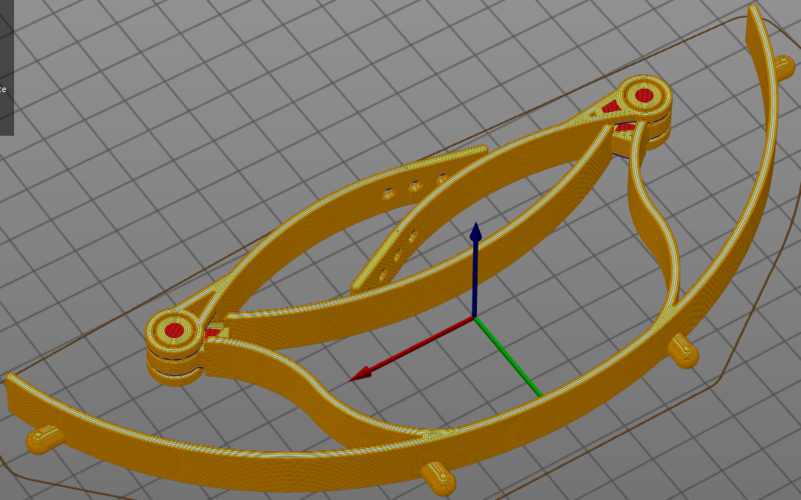
Stacking Covid Face shield.
pinshape
I can only fit two stacks of standard face masks frames on my printer bed. Our local New Zealand Facebook group for printing face shields was satisfied with this design. With my folding legs and rotating stack designs by 0, 90, 180, and 270 degrees, I can easily fit four stacks on my printer bed. By rotating them exactly as seen in the five-stack picture and printing with only a brim, no free outline, I can just fit five stacks on my printer bed which is 260x260mm. I could go higher than fifteen units but there's not much point. When you have a pandemic underway, going past four solid days of printing before handing in a batch of face shields is liable to let additional people get infected while waiting. So start the print, either let it complete in about four days for fast settings and PLA, or stop it during the bridging stage as it builds connections to the next level, start a new print and clean off the batch you've just lifted. Be sure to set your extrude settings manually; poor layer adhesion is typically from bad sliced nozzle diameters. Set your correct nozzle size in the hardware and then set an actual extrusion calculation slightly higher, i.e., 0.42 instead of 0.4. Good luck and be safe. Set a 0.3mm layer height. Prints well in PLA+ and regular PLA. File or use an edge deburring tool to remove any sticking out bits. Visor holes should be five millimeters. You can make visors out of soft drink bottle plastic or laminating pouches. If you use laminating pouches then feed each pouch into the opening of the pouch running through the laminator already. The curved surface can then be cut to the visor pin positions with little wastage. For long-duration wearing, pin the arms forward and run a sticky strip of draught seal around the inside. Ninjaflex or hat elastic for the strap, plenty of holes to lock with friction and the option to pin back through the loops. Be sure to wash and disinfect before offering to any emergency services. Three percent hydrogen peroxide solution would be a good start or diluted Janola or other bleach. Several improvements have been made. The fifteen-unit-high stack has enough bonding to stay together well while printing but to separate correctly as well. I also lengthened the print internal supports on the bearing slightly, separation was easy with PLA+ but required extra attention with PLA. I can now open the joints on PLA with no fuss. You can tell the latest version because the legs have five holes each for Ninjaflex filament instead of only four and are fractionally smaller and slightly closer together. This is to account for sweaty, greasy heads and to make filament slippage harder even without taking the filament through one of the loops formed on the outside.
With this file you will be able to print Stacking Covid Face shield. with your 3D printer. Click on the button and save the file on your computer to work, edit or customize your design. You can also find more 3D designs for printers on Stacking Covid Face shield..
